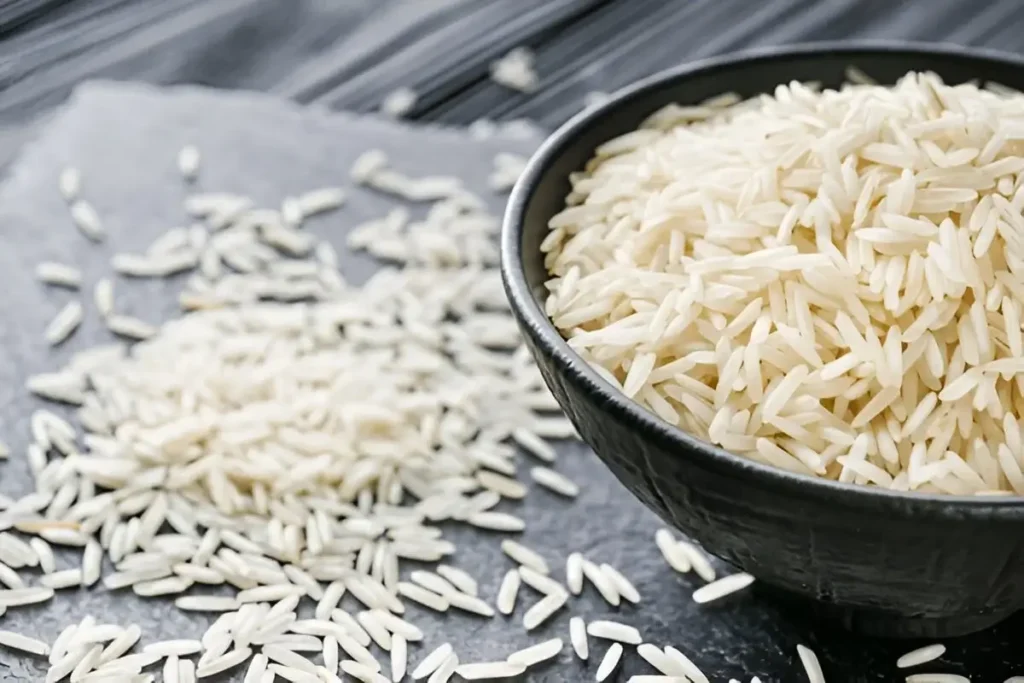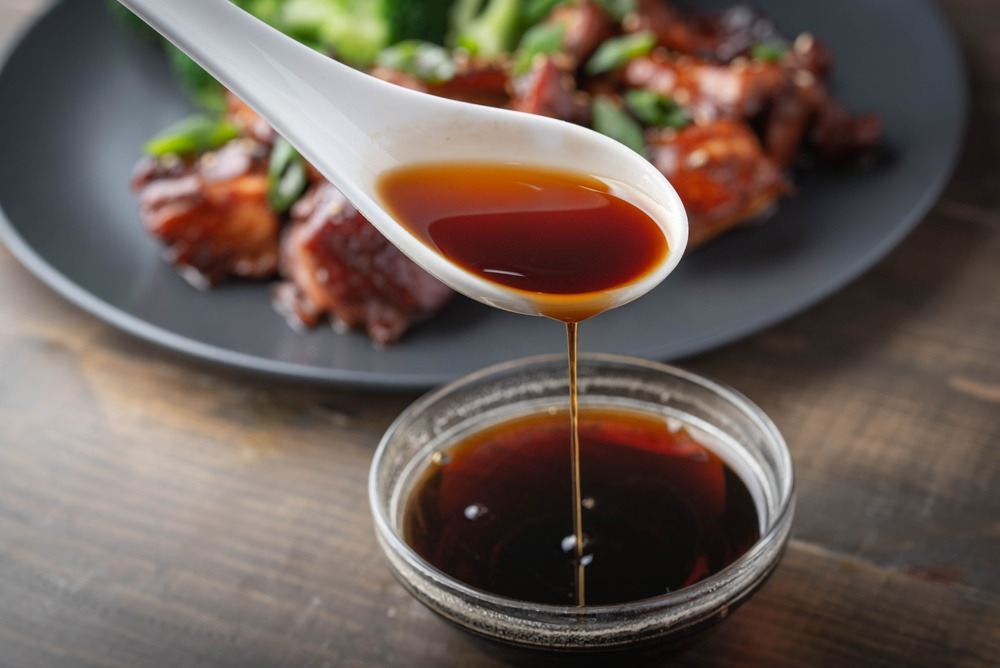This authentic Anjappar Egg Fried Rice recipe isn’t just another fried rice recipe—it’s an experience. If you’ve ever craved the bold, smoky flavors of authentic South Indian street-style fried rice, this dish is your ticket to culinary bliss.
Forget the bland, greasy takeout versions. This one’s packed with Chettinad spices, wok-fired aromas, and the perfect balance of fluffy rice and scrambled eggs. Whether you’re a spice lover or just looking for a new twist on fried rice, this recipe is about to change the game.
Ready to master the magic of Anjappar-style Egg Fried Rice? Let’s dive in.
Why Anjappar Egg Fried Rice Recipe Hits Different
You’ve had Chinese chicken fried rice. You’ve tried Japanese fried rice. But Anjappar’s egg fried rice? Whole different game. What makes it stand out?
- Authentic South Indian spices – It’s got that signature peppery heat and gingery kick
- Fluffy, perfectly scrambled eggs – Mixed in just right for that street-style egg fried rice vibe
- Smoky wok flavor – The kind you only get from high heat stir-frying
- Savory umami balance – Soy sauce meets Indian spice for that next-level taste
- No unnecessary grease – Lighter than most takeout versions, yet packed with flavor
Authentic Anjappar Egg Fried Rice Recipe

Ingredients
- 2 cups day-old basmati rice (fluffy, non-sticky, perfect texture)
- 3 large eggs (whisked)
- 1 small onion (finely chopped)
- 2 green chilies (chopped (adjust for heat preference))
- 1 tbsp fresh ginger (chopped)
- 1 tbsp fresh garlic (chopped)
- 1 tbsp soy sauce
- 1 tbsp oyster sauce
- 1 tsp freshly ground black pepper
- ½ tsp salt (adjust as needed)
- 2 tbsp ghee or oil
- 2 tbsp green onions (chopped (for garnish))
- 1 tbsp cilantro (chopped (for garnish))
- ½ cup carrots (finely diced)
- ½ cup green peas
Optional for extra flavor:
- 1 tsp homemade Chettinad masala or garam masala
Instructions
Step One – Prep Like A Pro
- Cold Rice – Fluff it up with your hands, break up any clumps.
- Eggs Whisked – Lightly beaten, ready to scramble.
- Aromatics Chopped – Onions, chilies, ginger, garlic all set.
- Sauces Measured – No eyeballing, precision matters.
Step Two – Wok Time!
- Crank that heat all the way up. You want that wok screamin’ hot. Drop in ghee or oil, let it shimmer. Toss in the onions, chilies, ginger, and garlic. Listen to that sizzle – that’s flavor building right there.
- After about 30 seconds, push the aromatics to the side. Pour in your beaten eggs, let them set a bit, then scramble them up. Soft, fluffy, and slightly undercooked. Remove and set aside. – they’ll finish cooking with the rice.
Step Three – The Perfect Rice Toss
- Drop in the diced carrots and peas along with salt and pepper. Stir-fry until veggies are tender-crisp.
- Then, add the cold, day-old basmati rice. Not fresh. Not warm. Cold. This keeps it fluffy, separate, and non-sticky.
- Using a spatula, toss the rice around the wok so it coats evenly in the oil and aromatics. Don’t stir too much—let it sit for a few seconds before flipping to get those crispy edges.
Pro Tip: If you only have fresh rice, spread it out on a tray and pop it in the fridge for 30 minutes. This dries it out and gives you that restaurant-style fried rice texture.
Step Four – The Sauce
- Splash in soy sauce – Just enough for umami, but not too much (we ain’t making soy rice).
- A drizzle of oyster sauce – Adds depth, slight sweetness, and glossy texture.
- A crack of black pepper – This is ESSENTIAL for that bold Anjappar punch.
- Sprinkle of salt – Balances everything out, but taste as you go.
- Once the sauces hit the rice, crank up the heat even higher. Give everything a good mix, tossing the wok with confidence. The rice should be dancing in the pan, soaking up all that flavor.
Step Five – The Finishing Touches
- Toss back in the scrambled eggs – Mix ‘em through the rice gently, keeping the pieces intact.
- Add chopped green onions and cilantro – Fresh, herby finish.
- Final drizzle of ghee – This is the ultimate secret to locking in that South Indian aroma.
At this point, taste-test like a chef. Need more heat? Add extra black pepper. Too salty? A squeeze of lemon can fix that. Missing depth? Another dash of oyster sauce can round it out.
How to Cook Perfect Basmati Rice for Authentic Anjappar Egg Fried Rice Recipe

Ingredients:
- 1 cup basmati rice
- 2 cups water
- ½ tsp salt (optional)
- 1 tsp oil or ghee (optional)
Method:
1. Rinse the Rice
- Place rice in a bowl and rinse it 3-4 times under cold water.
- Keep rinsing until the water runs clear (removes excess starch).
- Soak the rice in water for 15-20 minutes (optional but helps grains expand).
2. Cook the Rice (Stovetop Method)
- In a pot, bring 2 cups water to a boil.
- Add rinsed rice + salt + oil/ghee.
- Stir once, cover with a lid, and reduce heat to low.
- Simmer for 10-12 minutes (don’t open the lid).
- Turn off the heat and let it sit for 5 min (steam = fluffier rice).
3. Fluff & Cool the Rice
- Use a fork to gently fluff the rice—don’t mash it!
- Spread it on a tray to cool.
- Store in the fridge for at least 4 hours or overnight for perfect fried rice texture.
Quick Alternative: Cooking Rice in a Rice Cooker
Aroma Housewares Aroma 6-cup (cooked)

- Use a 1 cup rice : 1.5 cups water ratio (perfect ratio)
- Add rinsed rice, water, salt, and oil.
- Cook using the “White Rice” setting.
- Let it rest for 10 min before fluffing.
Pro Tips for Perfect Fried Rice Texture
- If using fresh rice, spread it on a tray and refrigerate it for 30 minutes before frying.
- Avoid over-rinsing fragrant rice (like jasmine or basmati) if you want to retain its natural aroma.
- Always fluff the rice with a fork after cooking to keep grains separate.
- High Heat is Key – Don’t let the pan cool down while cooking. The hotter, the better!
- Layer Your Flavors – Start with aromatics, then eggs, then rice, then sauces. This ensures each bite is packed with taste.
- Soy Sauce + Indian Spices = Magic – The mix of soy sauce and traditional Chettinad spices is what gives this dish its unique Indo-Chinese fusion flavor.
Pick the right rice, and your fried rice will always turn out fluffy, flavorful, and restaurant-quality!
Why Use Day-Old Rice?
- Drier texture – Less moisture = non-sticky, fluffy grains
- Better absorption – Soaks up flavors from sauces and spices
- Crispier frying – Gives you that slightly charred, restaurant-style taste
If you don’t have day-old rice, quick fix:
- Spread freshly cooked rice on a tray.
- Let it cool at room temp for 15–20 min.
- Pop it in the fridge for at least 30 min.
This helps mimic the texture of day-old rice so you still get perfect fried rice.
Choosing the Right Type of Rice for Fried Rice
Not all rice is created equal when it comes to fried rice. The texture, aroma, and ability to hold up in a hot wok depend on the type of rice you use.
Here’s a breakdown of the best (and worst) options:
- Basmati Rice – Light, fluffy, and aromatic. The grains stay separate, making it perfect for South Indian-style fried rice.
- Jasmine Rice – Slightly sticky but still holds its shape well. Ideal for Thai-style fried rice.
- Long-Grain White Rice – Common in Chinese fried rice. Less sticky than medium or short-grain rice.
- Day-Old Rice – Regardless of type, using cold, dry, day-old rice prevents clumping and makes stir-frying easier.
Rice to Avoid for Fried Rice
- Short-Grain Rice – Too sticky, turns mushy in the wok. Better for sushi or risotto.
- Freshly Cooked Hot Rice – Releases too much steam, making fried rice soggy instead of crispy.
- Parboiled or Instant Rice – Doesn’t absorb flavors well and lacks the right texture.
Mastering the Art of Egg Scrambling
Achieving the Ideal Egg-to-Rice Ratio
Getting the balance right between eggs and rice is super important for that authentic Anjappar egg fried rice recipe taste. You don’t want to skimp on the eggs, but you also don’t want them to overpower the rice.
A good rule of thumb is to use about two eggs for every cup of cooked rice. This ratio ensures that the eggs are noticeable without being too dominant.
Secrets to Fluffy and Flavorful Scrambled Eggs
To get those eggs just right:
- Beat the eggs well with a pinch of salt and a dash of pepper.
- Heat a bit of oil or butter in your pan until hot.
- Pour in the eggs and let them sit for a few seconds before stirring.
- Stir gently and continuously to keep the eggs soft and fluffy.
- Cook on medium heat to avoid overcooking.
- Remove from heat just before they fully set – eggs continue cooking from residual heat.
Timing and Temperature Control for Perfect Eggs
Timing is everything when it comes to scrambling eggs. You want them cooked through but still soft.
Cook on medium heat and keep a close eye on them. Stirring too early or too late can mess up the texture. If they start to look dry, take them off the heat immediately.
Remember, eggs continue to cook even after being removed from the stove, so it’s better to err on the side of slightly undercooked.
Mastering egg scrambling is the secret ingredient to perfect egg fried rice. The technique transforms a simple dish into something special, capturing the essence of Anjappar cuisine.
Common Mistakes & How to Fix Them
Even experienced cooks mess up fried rice. Here’s how to avoid disaster:
Overcrowding the Pan: This can lead to steaming rather than frying. Cook in batches if needed.
Mushy Rice? – Always use day-old rice and separate grains before frying. If using fresh rice, let it cool completely before stir-frying.
No Wok Hei (Smoky Flavor)? – Use a carbon steel wok on high heat and avoid overcrowding. Stir-fry in batches if needed.
Eggs Turn Rubbery? – Scramble the eggs separately on low heat before adding them back at the end.
Rice Sticking to the Pan? – Use enough oil and make sure your wok is properly preheated before adding ingredients.
Ignoring Heat Levels: Keep the heat high for that signature smoky flavor.
Enhancing the Flavor with Garnishes and Add-Ins
Popular Garnishes for Extra Flavor
Garnishes are more than just a pretty touch; they can really boost the flavor of your fried rice.
Fresh cilantro or green onions sprinkled on top add a burst of color and freshness. If you want a richer taste, try topping your rice with fried onions—they bring a crunchy, flavorful contrast.
Creative Add-Ins to Customize Your Dish
Want to switch things up? A handful of raisins or diced pineapple can add a surprising twist. The sweetness balances the savory notes and adds a layer of complexity. But remember, use these sparingly so they complement rather than overpower the other flavors.
Balancing Flavors with the Right Seasonings
While soy sauce is the main player, don’t be afraid to mix in other seasonings. A splash of fish sauce or oyster sauce can deepen the umami flavor. You might also want to add a bit of white pepper for warmth or a few drops of sesame oil for a nutty finish.
For an extra kick, consider adding a half teaspoon of five spice right after the rice hits the pan, ensuring it coats evenly for improved flavor.
Serving Suggestions for Anjappar Egg Fried Rice Recipe
Pairing with Traditional South Indian Sides
Anjappar Egg Fried Rice is a star on its own, but pairing it with some traditional South Indian sides can turn your meal into a feast. Consider serving it with:
- Raita – A cooling yogurt-based dip with cucumbers and coriander to balance the spices.
- Indian Pickles – Adds a punchy, tangy contrast that complements the dish beautifully.
Creating a Complete Meal Experience

To create a well-rounded meal, think about textures and flavors. Consider:
- Crispy Papadums – Adds a crunchy element.
- Fresh Cucumber Salad – Brings a refreshing contrast.
- Grilled Chicken or Crispy Shrimp – Enhances the protein content and adds layers of taste and texture.
Presentation Tips for a Restaurant-Style Dish
Presentation makes a big difference when serving Anjappar Egg Fried Rice recipe:
- Serve in a wide, shallow bowl for an inviting look.
- Top with fresh spring onions or a sprinkle of sesame seeds for color.
- A squeeze of lemon juice right before serving elevates the flavors, giving it a restaurant-quality finish.
- Cheesy Twist: Melt some cheddar or mozzarella on top for an indulgent fusion-style fried rice.
Variations for Anjappar Egg Fried Rice Recipe
Adjusting Spice Levels to Suit Your Taste
When it comes to spice, everyone has their own preference. Some like it fiery, while others prefer a milder kick. Taste your dish as you cook and adjust the spices accordingly:
- Add more green chilies or red chili flakes to increase heat.
- Start with a small amount and build up gradually—it’s easier to add spice than to remove it.
Exploring Different Protein Options
Who says you have to stick to just eggs? Make your Anjappar Egg Fried Rice recipe heartier with:
- Marinated Chicken Pieces – Adds extra flavor and protein.
- Juicy Shrimp – Brings a seafood twist.
- Tofu – A great vegetarian alternative.
Cook proteins separately and toss them in with the rice at the final stage for a well-rounded meal.
Innovative Twists on the Classic Recipe
Get creative with your fried rice by experimenting with different add-ins:
- Veggie Delight – Add bell peppers, carrots, or peas for extra color and nutrition.
- Chettinad Influence – Incorporate a pinch of ground fennel, cinnamon, or cloves for a South Indian twist.
- Fusion Flair – Try an Indo-Chinese twist with a splash of soy sauce and a dash of vinegar.
Perfect Side Dishes for Anjappar Egg Fried Rice Recipe
No meal is complete without the right pairings! Here’s what goes best with Anjappar-style fried rice:
Classic Pairings:
- Chettinad Chicken Curry – Spicy, coconut-based, and deeply flavorful.
- Spicy Paneer 65—absolute fire!
- Gobi Manchurian – Crispy, saucy Indo-Chinese cauliflower bites.
- Pepper Chicken Masala – Bold black pepper and garlic flavors complement the fried rice beautifully.
- Cucumber Raita – A cool yogurt-based side to balance the heat.
Pair it right, and you’ve got a restaurant-level meal at home!
Authentic vs. Restaurant vs. Street-Style – What’s the Difference?
Ever wondered why fried rice tastes different in restaurants compared to street stalls or homemade versions? Here’s the breakdown:
Authentic Home-Cooked Anjappar Fried Rice – Uses freshly ground spices, homemade masala blends, and day-old basmati rice for the best texture.
Restaurant-Style Anjappar Fried Rice – Often uses MSG or flavor enhancers, more oil for a glossy finish, and precisely measured sauces for consistency.
Street-Style Fried Rice – Typically spicier, cooked over extremely high heat for that deep smoky wok hei flavor, and often has extra green chilies & garlic.
For a true home-cooked yet restaurant-quality Anjappar-style fried rice, we strike the perfect balance between these three styles.
FAQs – Your Burning Fried Rice Questions, Answered
Can I make this without a wok?
Yes! Use a cast iron or heavy stainless steel pan. Just make sure it’s super hot before you start.
What’s the best oil for this?
Ghee is traditional, but you can use sesame oil or peanut oil for a different twist.
How do I store leftovers?
Cool it down, then keep it in an airtight container in the fridge for up to 2 days. Reheat in a hot pan, not the microwave.
Is Anjappar egg fried rice Recipe healthy?
Yes! It’s lighter than regular takeout because it uses less oil and fewer processed additives. You can make it even healthier by adding extra vegetables and lean protein.
What’s the difference between Chinese and Indian fried rice?
Indian fried rice uses more spices, black pepper, and ghee, while Chinese fried rice relies on soy sauce, sesame oil, and less spice.
Can I make this without soy sauce?
Absolutely! Swap it for coconut aminos or a dash of tamarind paste for a more South Indian flavor.
Why does my fried rice taste bland?
You might be missing enough salt, soy sauce, or black pepper. Also, using high heat helps lock in flavor.
Final Thoughts – Go Make It Happen!
So, there you have it! You’ve just unlocked the secrets to making an authentic Anjappar Egg Fried Rice recipe right in your own kitchen. It’s all about getting those steps just right and not being afraid to tweak things to your taste.
Whether you’re cooking for yourself or impressing friends, this dish is sure to be a hit. Remember, practice makes perfect, and each time you make it, you’ll get a little better. So grab your wok, gather your ingredients, and dive into this flavorful journey. Happy cooking!
Print
Authentic Anjappar Egg Fried Rice Recipe
Ingredients
- 2 cups day-old basmati rice (fluffy, non-sticky, perfect texture)
- 3 large eggs (whisked)
- 1 small onion (finely chopped)
- 2 green chilies (chopped (adjust for heat preference))
- 1 tbsp fresh ginger (chopped)
- 1 tbsp fresh garlic (chopped)
- 1 tbsp soy sauce
- 1 tbsp oyster sauce
- 1 tsp freshly ground black pepper
- ½ tsp salt (adjust as needed)
- 2 tbsp ghee or oil
- 2 tbsp green onions (chopped (for garnish))
- 1 tbsp cilantro (chopped (for garnish))
- ½ cup carrots (finely diced)
- ½ cup green peas
Optional for extra flavor:
- 1 tsp homemade Chettinad masala or garam masala
Instructions
Step One – Prep Like A Pro
- Cold Rice – Fluff it up with your hands, break up any clumps.
- Eggs Whisked – Lightly beaten, ready to scramble.
- Aromatics Chopped – Onions, chilies, ginger, garlic all set.
- Sauces Measured – No eyeballing, precision matters.
Step Two – Wok Time!
- Crank that heat all the way up. You want that wok screamin’ hot. Drop in ghee or oil, let it shimmer. Toss in the onions, chilies, ginger, and garlic. Listen to that sizzle – that’s flavor building right there.
- After about 30 seconds, push the aromatics to the side. Pour in your beaten eggs, let them set a bit, then scramble them up. Soft, fluffy, and slightly undercooked. Remove and set aside. – they’ll finish cooking with the rice.
Step Three – The Perfect Rice Toss
- Drop in the diced carrots and peas along with salt and pepper. Stir-fry until veggies are tender-crisp.
- Then, add the cold, day-old basmati rice. Not fresh. Not warm. Cold. This keeps it fluffy, separate, and non-sticky.
- Using a spatula, toss the rice around the wok so it coats evenly in the oil and aromatics. Don’t stir too much—let it sit for a few seconds before flipping to get those crispy edges.
Pro Tip: If you only have fresh rice, spread it out on a tray and pop it in the fridge for 30 minutes. This dries it out and gives you that restaurant-style fried rice texture.
Step Four – The Sauce
- Splash in soy sauce – Just enough for umami, but not too much (we ain’t making soy rice).
- A drizzle of oyster sauce – Adds depth, slight sweetness, and glossy texture.
- A crack of black pepper – This is ESSENTIAL for that bold Anjappar punch.
- Sprinkle of salt – Balances everything out, but taste as you go.
- Once the sauces hit the rice, crank up the heat even higher. Give everything a good mix, tossing the wok with confidence. The rice should be dancing in the pan, soaking up all that flavor.
Step Five – The Finishing Touches
- Toss back in the scrambled eggs – Mix ‘em through the rice gently, keeping the pieces intact.
- Add chopped green onions and cilantro – Fresh, herby finish.
- Final drizzle of ghee – This is the ultimate secret to locking in that South Indian aroma.
At this point, taste-test like a chef. Need more heat? Add extra black pepper. Too salty? A squeeze of lemon can fix that. Missing depth? Another dash of oyster sauce can round it out.

